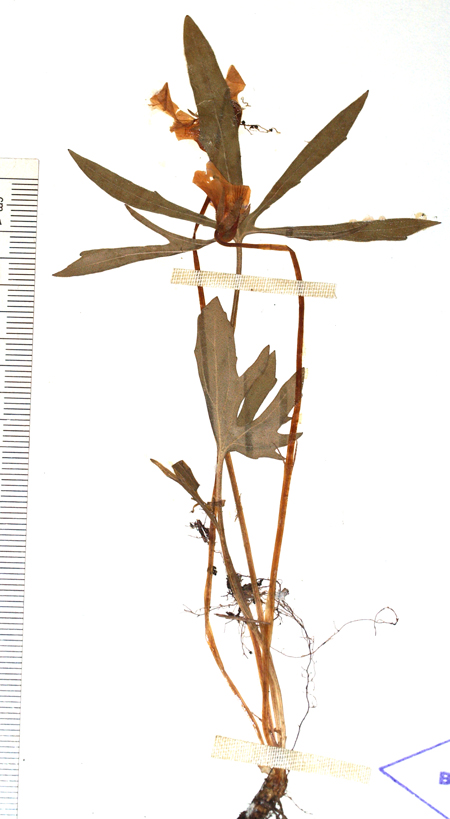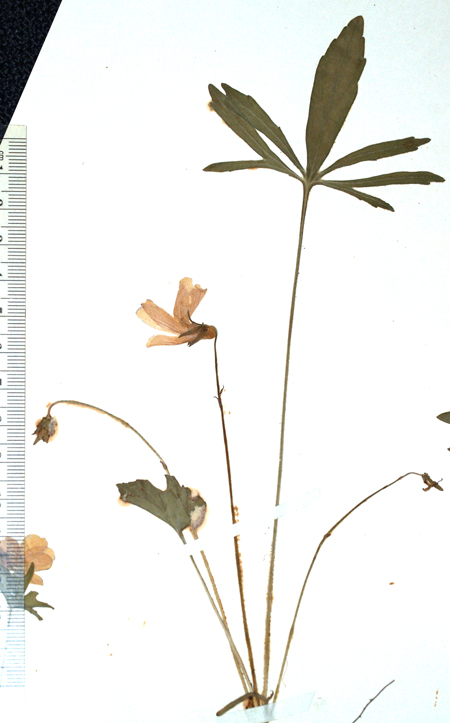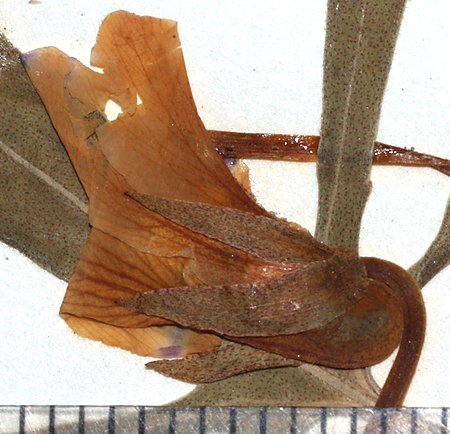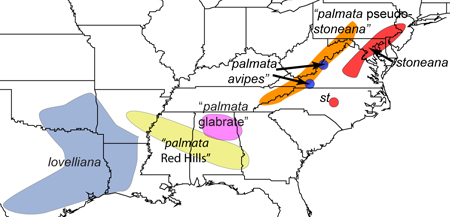Viola "palmata Red Hills"
Common names:
None.
Synonyms:
None.
Description:
Foliage sparsely to densely hirtellous (especially on petioles and along veins on lower surface of leaf blades), green, margins of leaf blades ciliate, peduncles glabrous; larger leaf blades deeply biternately divided into 7 linear-lanceolate lobes, the terminal primary division divided just above the base into 2 widely divergent linear-lanceolate lateral lobes(one on each side), the lateral primary divisions each deeply divided into 2 linear-lanceolate lobes, sinuses between primary divisions reaching virtually to the petiole summit; calyx usually sparsely ciliate; lowest sepals linear-lanceolate to lance-triangular, acuminate; cleistogamous capsule heavily purple-spotted or blotched, on an initially prostrate peduncle arching upward abruptly just prior to dehiscence.
Ecology:
Drier sandy soils in open dry to dry-mesic woodlands, especially on ridgetops of bluffs and hills bordering streams and rivers.
Distribution:
Distributed in a somewhat narrow band from w. GA and se. AL to c. AR.
Rarity:
None.
Phenology:
Phenology presumably the same as V. palmata sensu lato.
Affinities:
This species belongs to the Acaulescent Blue Violet lineage, sect. Nosphinium W.Becker, subsect. Boreali-Americanae (W.Becker) Gil-ad, in the Palmata species group.
Hybrids:
None.
Comments:
Distinctive regional endemic, the name referring to the first observed specimens from eastern Alabama; specimens from the western and eastern ends of its range are identical in all respects. Surely more frequent than the relatively few specimens indicate.
Literature Cited:
None.

Chasmogamous flowering habit from herbarium specimen: AL, Tallapoosa Co., (n. of Pollard) river hills, 26 Apr 1901, F. S. Earle s.n. (NY)

Chasmogamous flowering habit from herbarium specimen: AR, Jefferson Co., Watson State Park, P.O. Pine Bluff, Wooded ridges, Elev. 200', 25 Apr 1943, D. Demaree 24283 (NY)

Leaves during cleistogamous fruit from herbarium specimen: AL, Tallapoosa Co., Dadeville, 12-15 Jul 1900, C. L. Pollard and W. R. Maxon 133 (US442795)

Chasmogamous flower profile view from herbarium specimen: AL, Tallapoosa Co., (n. of Pollard) river hills, 26 Apr 1901, F. S. Earle s.n. (NY)

Chasmogamous flower profile view from herbarium specimen: AR, Jefferson Co., Watson State Park, P.O. Pine Bluff, Wooded ridges, Elev. 200', 25 Apr 1943, D. Demaree 24283 (NY)

Map of regionally endemic taxa in the Palmata species group by Harvey Ballard